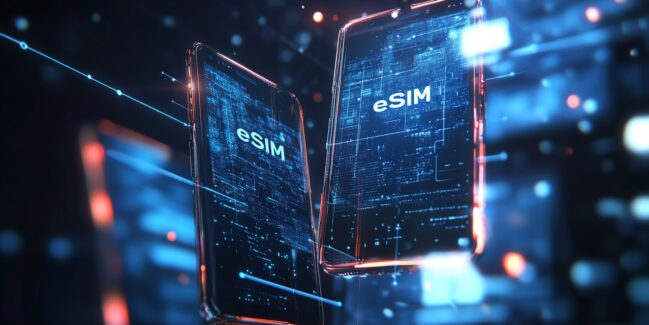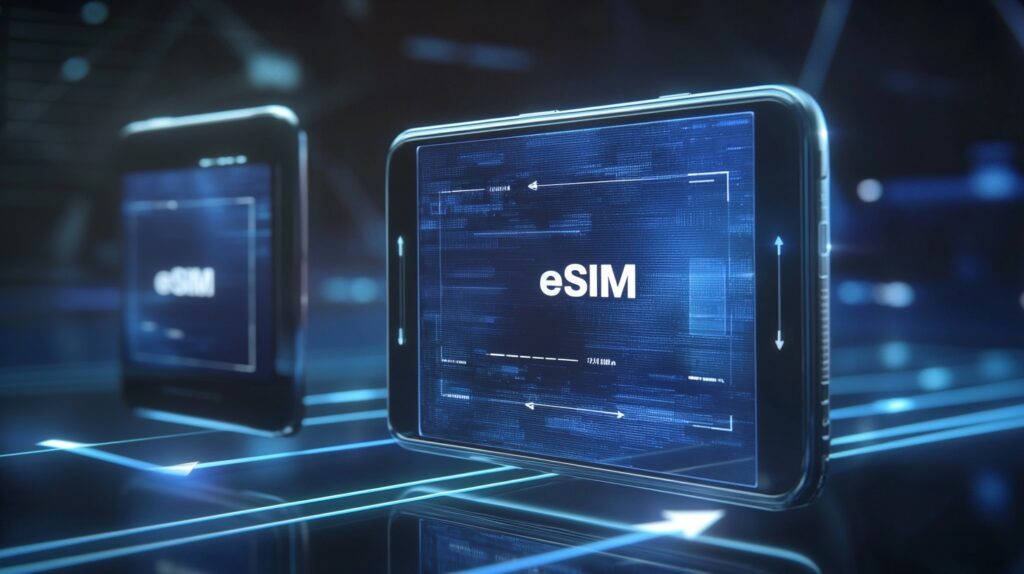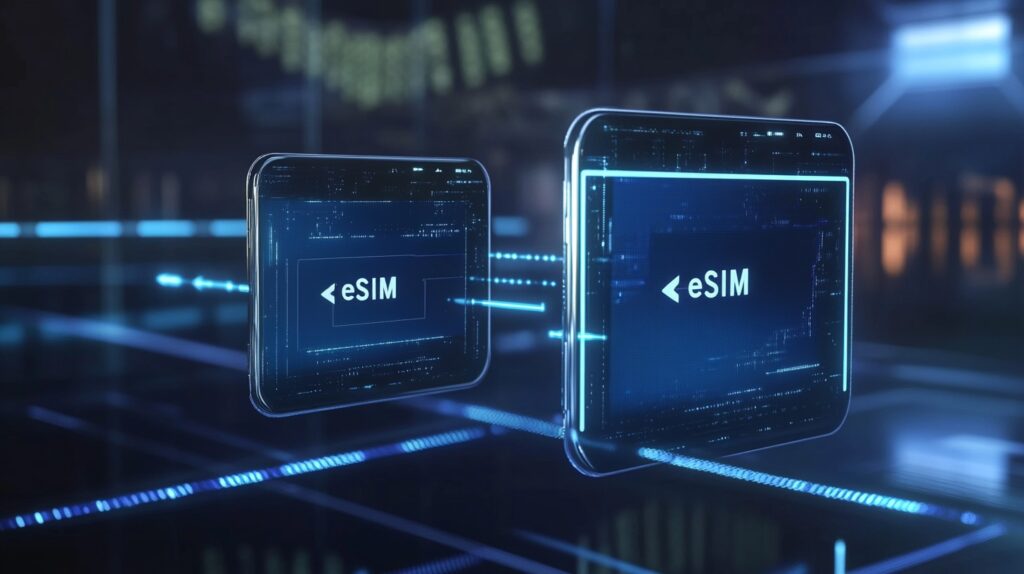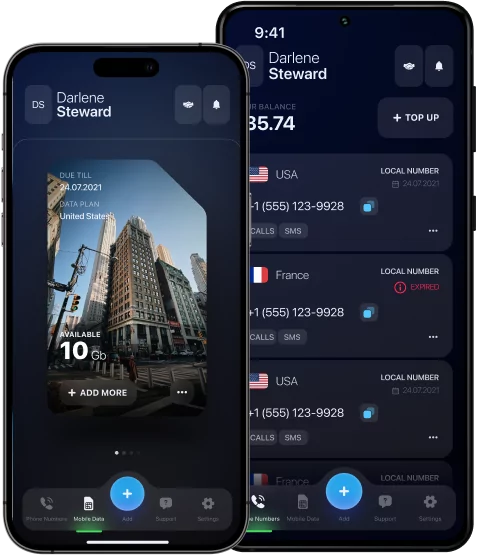How to Transfer eSIM from One Prone to Another – Easy Steps

Did you know that you can transfer eSIM from one phone to another, whether it’s Android or iPhone? This feature makes it easy to transfer all mobile data plans to another device without replacing the SIM card. The eSIM is an embedded chip that replaces a traditional SIM card and offers greater flexibility.
But how to transfer eSIM from one phone to another? Let’s continue to learn the instructions.
What You Need to Know Before Transferring eSIM
– How do I transfer eSIM from one phone to another?
Before transferring eSIM between devices, there are several points to consider:
- Device Compatibility. Make sure that the new phone supports eSIM technology and is also compatible with the carrier you are using. This can be done by opening the technical documentation for the phone, as well as on the website of the mobile carrier.
- Network Connectivity. Check for a stable internet connection. It can be both Wi-Fi and mobile data.
- Backup Copy. Create a backup copy of the data on your old phone. This is necessary so that in case of a failed transfer, you will have all the necessary data on your old phone.
- Active eSIM Plan. Check the inactivity of the eSIM plan on it. After transferring the data to a new phone, you can activate the eSIM plan used.
- Specific Actions. Familiarize yourself with possible time delays or requirements from your operator in advance to make the transition as smooth as possible.
These short but important steps will help you get a positive and fast experience of transferring eSIM from one device to another.
How to Transfer eSIM from One Phone to Another: A Step-by-Step Guide
– How can I transfer eSIM from one phone to another?
To transfer eSIM from one device to another, you need to complete only 5 important steps:
Step #1: Check the device compatibility. Make sure that your new phone supports eSIM technology and is compatible with your mobile carrier. Keep in mind that without compatibility, data migration is impossible.
Step #2: Connect with a mobile carrier. Contact your mobile carrier to get an instruction on how to transfer eSIM from one phone to another. A mobile carrier will give you a special QR code for an activation.
Step #3: Make a backup copy. Save all important data and initial eSIM settings on your previous phone. This will help save data in case of failures.
Step #4: Deactivate an eSIM on the previous phone. Turn off all functions on the previous phone related to eSIM technology. This will help to avoid conflicts between devices and possible errors during the transfer.
Step #5: Activate eSIM on the new phone. Use a QR code or an activation code to setup all eSIM functions on your new phone. It will ensure the whole working process of eSIM technology on your phone.
All the steps are important for the correct data transfer and subsequent configuration of the eSIM on the new device.

Check Device Compatibility and Carrier Support
There are two of the most important points in transferring eSIM from one phone to another. The first one is the compatibility of the new device or its support for eSIM technology. If the new phone does not support this feature, then the eSIM transfer is not possible. It is compatibility that guarantees the correctness of the transfer and subsequent operation of all necessary settings and functions. Without these factors, your number and data plan will not work on the new device, which will make the transition useless.
Backup Your Phone Data
The second point is the importance of creating a backup copy of the data, in case of incorrect transfer or errors in activation. Creating a backup ensures the safety of data such as contacts, photos, setting up functions, and more. This step prevents problems, failures, and errors, and guarantees the safety of all data.
How to Transfer eSIM from One Android Phone to Another
It is not difficult to transfer eSIM from one Android device to another. However, you need to consider several transfer steps, and also be prepared for the fact that the process may vary from model to model: Samsung, Google Pixel, Huawei, etc.
Nevertheless, there is a universal instruction that is suitable for most Android phone models:
- Check the device compatibility. Make sure that your new phone supports eSIM technology and is compatible with your mobile carrier.
- Make a backup copy. Save all important data and initial eSIM settings on your previous phone.
- Deactivate an eSIM on the previous phone. Open Settings → Internet Network → Carrier Plan or SIM Card. Find the eSIM that you want to transfer and deactivate or delete it.
- Connect with a mobile carrier. Contact your mobile carrier to get an instruction on how to transfer eSIM from one phone to another. A mobile carrier will give you a special QR code for an activation.
- Activate eSIM on the new phone. Open Settings → Internet Network → Carrier Plan or SIM Card. Choose an option for new eSIM adding. Scan a QR code and activate eSIM on the new Android phone.
- Check the connection. Make sure everything works correctly on your new device.
Despite possible interface differences in Android models, these universal steps will ensure the transfer of eSIM from one Android phone to another.

How to Transfer eSIM from One Phone to Another iPhone
It is much easier to transfer eSIM from one iPhone phone to another since universal instructions will apply to all models:
- Check the device compatibility. Make sure that your new iPhone supports eSIM technology and is compatible with your mobile carrier.
- Make a backup copy. Save all important data and initial eSIM settings on your previous phone via iCloud or iTunes.
- Deactivate an eSIM on the previous iPhone. Open Settings → Cellular or Mobile Data → eSIM → Delete eSIM.
- Set up a new iPhone. Turn on your new iPhone and follow the initial setup instructions. You can use your backup from iCloud or iTunes.
- Activate eSIM on the new phone. Open Settings → Cellular or Mobile Data → Add eSIM. Then follow the mobile carrier’s instructions and scan a QR code to activate eSIM on the new iPhone.
- Check the connection. Make sure everything works correctly on your new iPhone device.
This guide will help you successfully and quickly transfer eSIM from one iPhone device to another without unnecessary steps and actions.
Troubleshooting Common eSIM Transfer Issues
Unfortunately, even if you follow all the steps from the plan to transfer eSIM from one device to another, problems may arise. Here are the most common ones:
- Activation Errors. This error occurs due to entering an incorrect QR code provided by the mobile carrier. Perhaps the data is outdated and the mobile operator has not updated it.
- Connection Problems. After transferring eSIM from one phone to another, it may be difficult to connect to the network. This error may occur due to a temporary failure or incorrect network configuration.
- Incompatibility. When transferring eSIM, keep in mind that some devices have limited eSIM support. This is primarily due to the difference in operating system versions.
As you can see, all the issues that arise are easily solved if you follow the instructions and do not panic.
Activation Errors and Solutions
Here are the main problems that may arise after transferring eSIM from one phone to another. Learn more about how to solve them:
#1: Wrong QR Code.
Solution — contact the mobile carrier to get a new update.
#2: Connection Problems.
Solution — restart your phone and check the network settings.
#3: Device incompatibility.
Solution — check the compatibility in advance.
#4: Not Deleted eSIM.
Solution — make sure you delete eSIM from the previous device.
#5: Mobile Carrier’s Setting Problems.
Solution — check all received settings from the operator to be sure that everything is correct.
Save this memo in case of problems after transferring the eSIM to a new device.
Carrier or Network Issues
There are also two main problems associated with the telecom operator after transferring the eSIM to a new device:
#1: Network Incompatibility.
Solution — make sure your phone is compatible with the mobile carrier’s network. If necessary, contact with the operator to get this data.
#2: Settings Issues.
Solution — check and update the network settings.
Keep in mind that these problems can be fixed by checking the compatibility and relevance of the settings, as well as consulting with the operator’s technical support.

Why Choose eSIM Plus for eSIM Management?
Anyway, before transferring eSIM from one phone to another, you need to do 3 simple steps:
- Check device compatibility with eSIM.
- Create a data backup copy.
- Disable eSIM on the previous device.
Then, using the QR code or activation code provided by the carrier, activate the eSIM on the new device.
Any questions and problems that arise during the activation and transfer of eSIM can be easily solved using the instructions in this article, as well as by contacting your mobile operator.
In addition, do not forget about the importance of choosing the right eSIM provider, for example, eSIM Plus. The service offers a number of significant advantages, including the ability to activate quickly, flexibility in managing multiple numbers on one device, and simplified switching between tariffs.
eSIM Plus also provides high security and convenience.
Discover the world of eSIM technologies with eSIM Plus!





